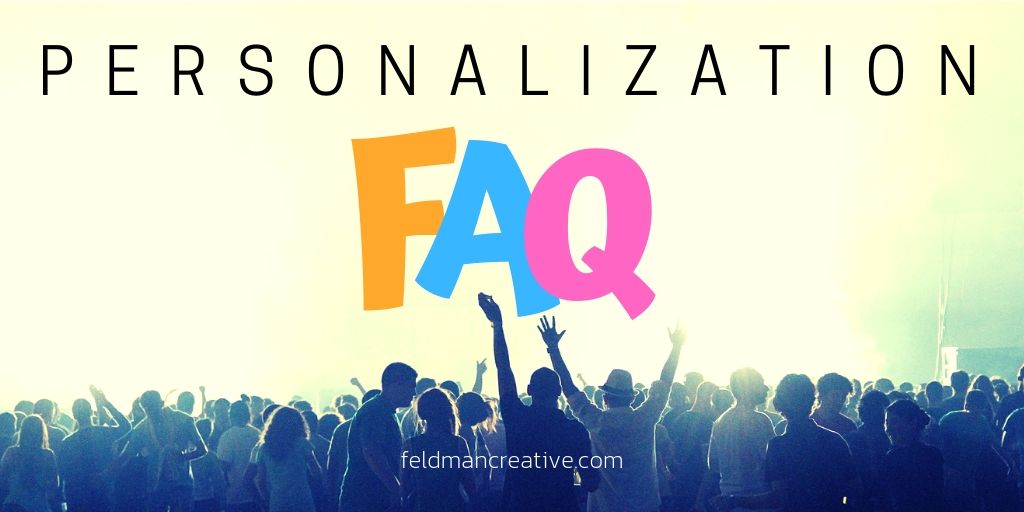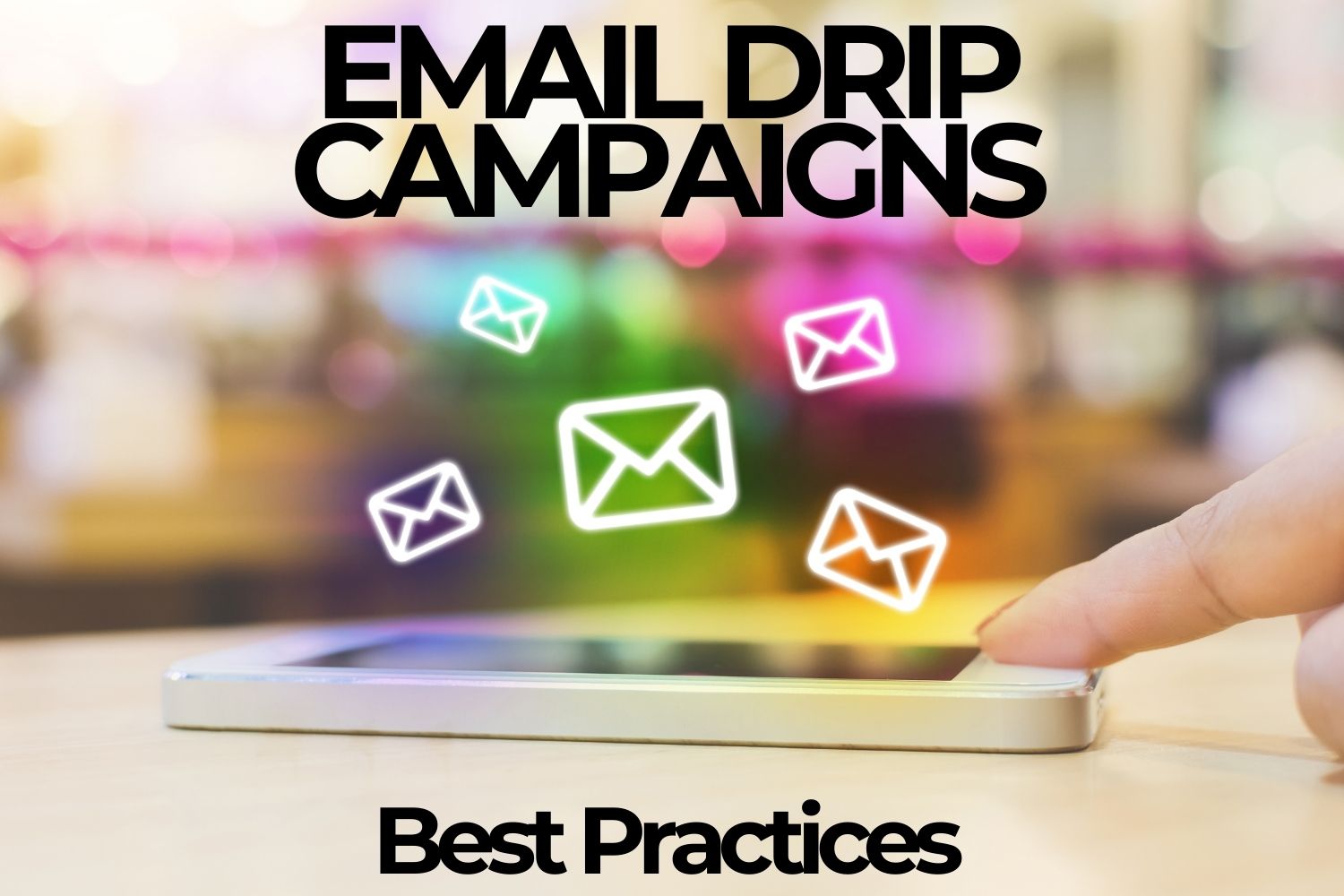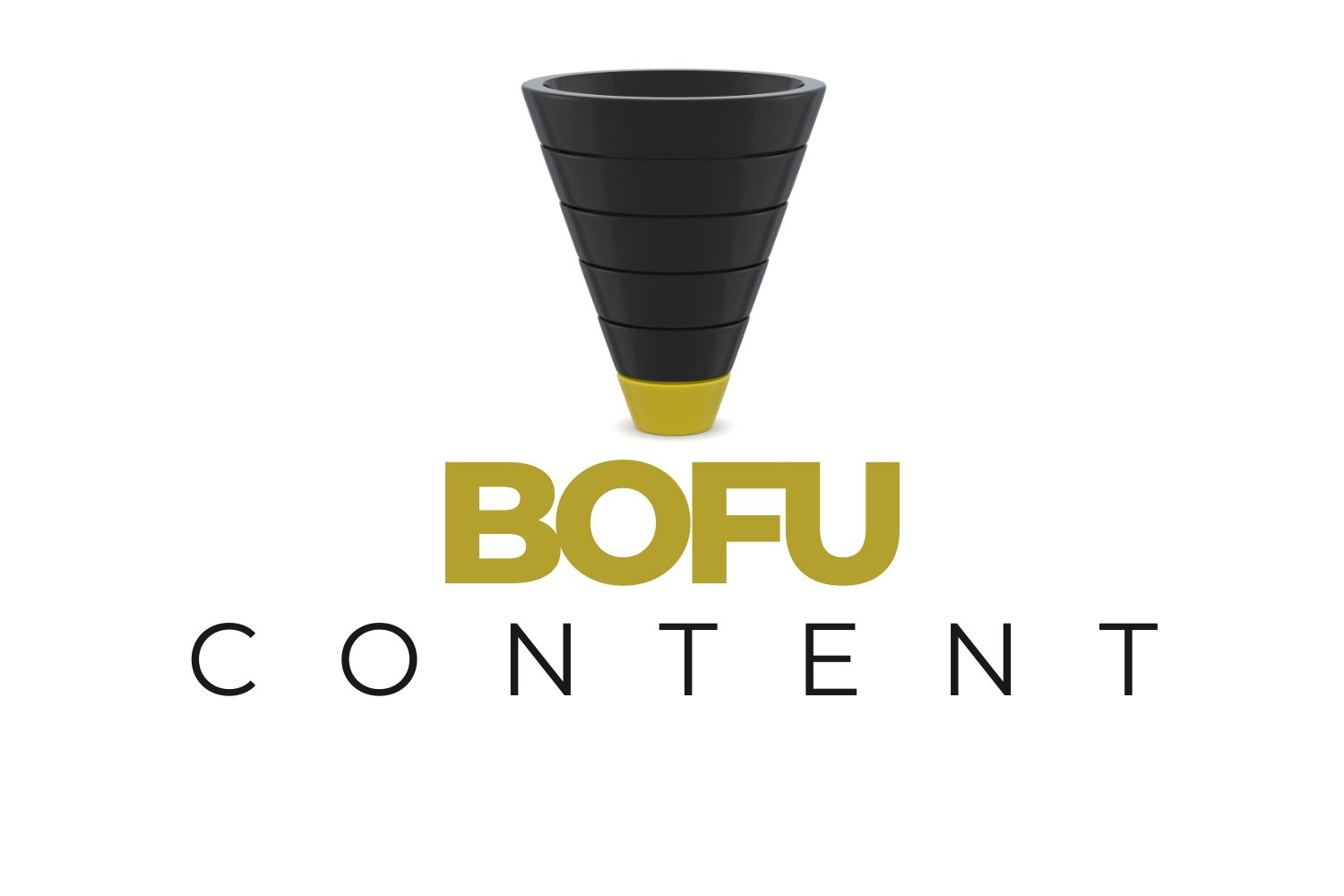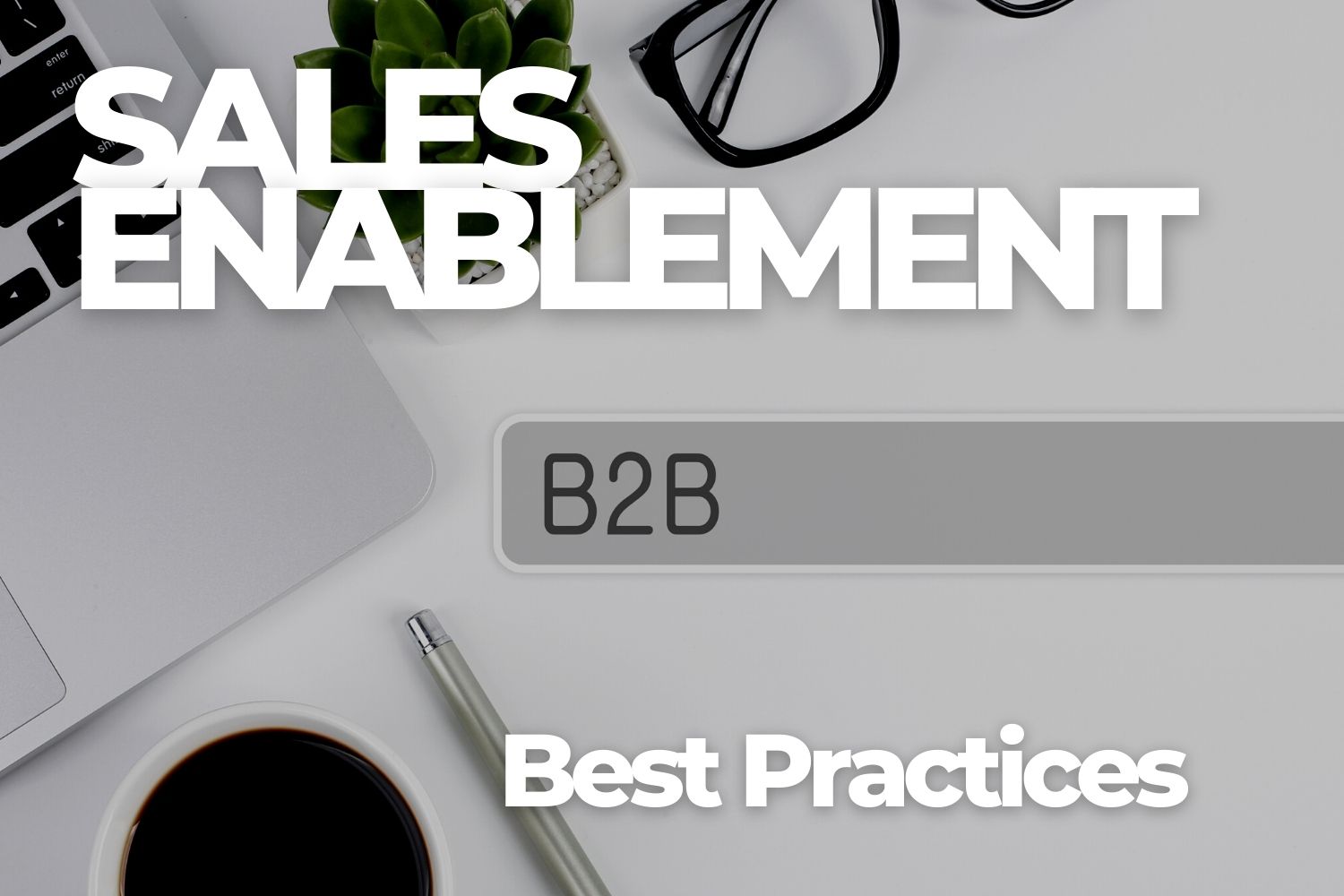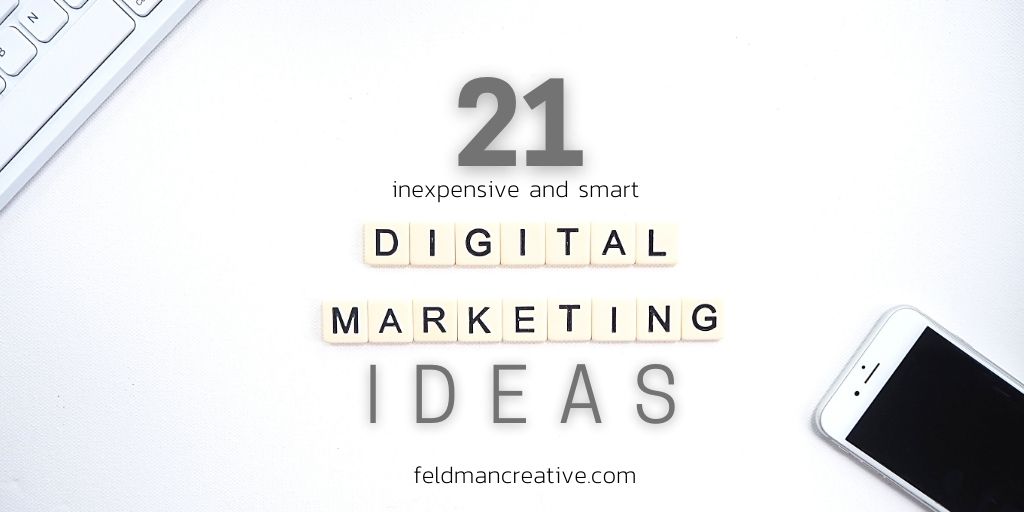“Customers expect brands to know what they’re interested in, what they need now, and even what they might need in the future.”
~ Wilson Raj, SAS
Why pursue personalization?
In his 1991 book, Relationship Marketing, Regis McKenna spoke of the age of customer-centered and knowledge-based marketing.
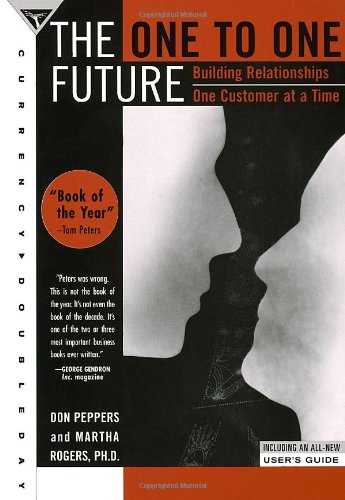
The One to One Future, by Don Peppers and Martha Rogers, published two years later, foretold a future where marketing and technology would marry and give birth to a new age of personalization.
Do people want personalized marketing?
They do indeed. Customers want to be understood. Though enjoying a personalized experience calls for accepting that brands will gather and use personal information, few people object. In fact, recent research from Epsilon (The Power of Me) reports:
- 90% of people find personalization appealing, and
- 80% of consumers are more likely to do business with a company that offers personalized experiences
How does your brand benefit from personalization?
When brands understand their customers and respond accordingly they can:
- Improve the customer experience
- Create consistency across channels
- Drive increased revenues
- Increase brand loyalty
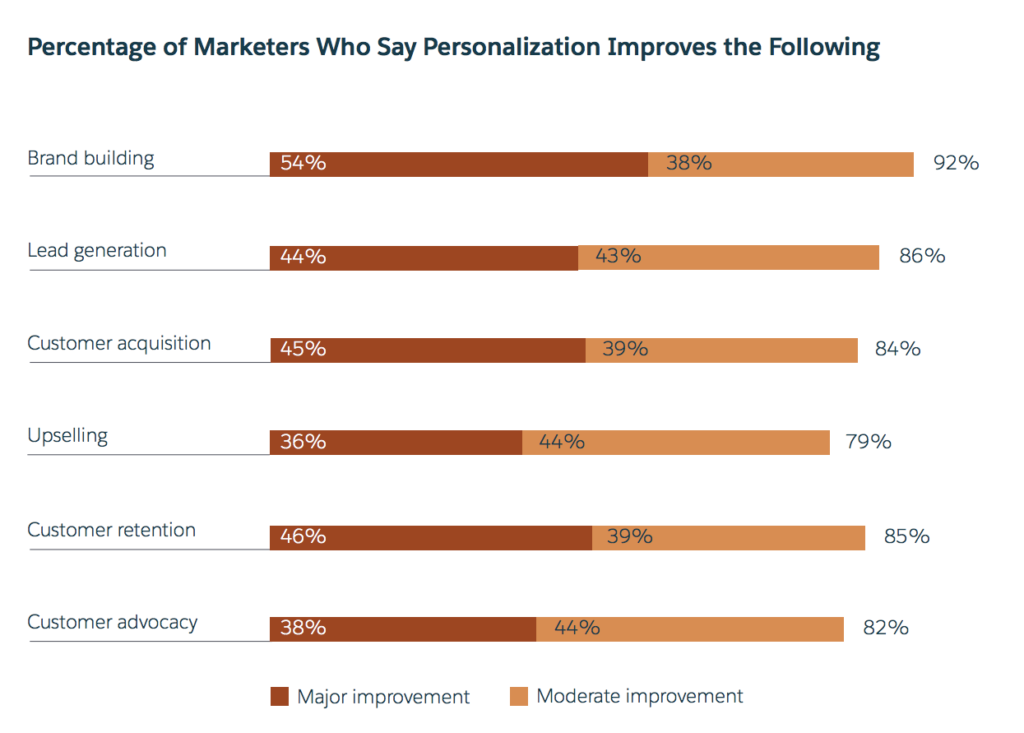
The many benefits of personalized marketing—from the fifth edition of
Salesforce’s State of Marketing report.
Let’s examine the essential questions about personalized marketing and uncover the answers you’ll need to tap its power.
Where do you begin with personalized marketing?
As you know, nearly all marketing strategies begin with goals. Questions to ponder as you pursue them include:
- What do you want to achieve? Increased conversions… reduced bounce rate… average order value… etc. You may want to improve the ROI of a specific marketing tactic or many.
- How will you measure success? Which metrics will determine whether you have reached your goals?
- Who are you targeting? This question begets more questions… Do you want to deliver different experiences to new versus returning visitors? What channels will you focus on?
- What data sources do you need? Start thinking about the data you need to reach your goals.
- What content do we need? You’ll need to identify any major gaps and make a plan to address them.
- What skills do we need? Start thinking about the tasks required to accomplish your goals and how they’ll get done.
Marketing automation leaders, Marketo, encourage marketers to approach personalization planning by answering the following three questions:
- Who—Who will you personalize for?
- What—What will you personalize?
- Where—Where will you present personalized content?
How do you apply personalization in B2C marketing?
Personalization in consumer marketing could be applied based on:
- Location—Where is your customer and how can your product be more relevant based on the answer?
- Demographics—What information about your buyer’s age, gender, and more can inform your messages and offers?
- Behavior—How has your prospect or customer reacted to various offers or content?
- History—What have you learned about the customer that would help you nurture new or ongoing sales?
How do you apply personalization in B2B marketing?
Personalization in business-to-business marketing is more complex but could be applied based on:
- Account-Based Marketing (ABM)—How can you target and personalize for specific companies or existing customers?
- Persona-based—How might you target specific buyer personas by title, job functions, needs and pain points?
- Location—Can you target businesses based on location?
- Behavior—The holy grail of personalization targets buyers based on behavior and data drawn from analytics across their interactions.
How does personalization meet customer expectations?
In an effort to simplify the complex topic of personalization, Accenture developed a tidy “4R Personalization Framework.”
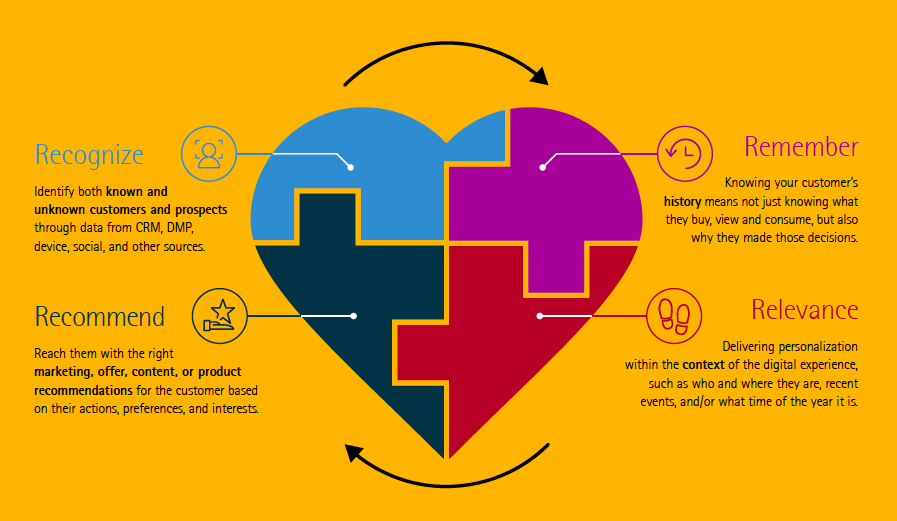
- Recognize
Customers expect to be recognized by name. - Remember
They expect to have their preferences remembered without having to be reminded. - Recommend
They expect the business to pay close attention to their unique preferences and make recommendations. - Relevance
They expect personalization that is relevant within the context of the situation, such as where and when.
I’ll summarize it all with one short phrase: right-timing. Examples might be:
- Suggesting refilling a supply when the time is right
- Recommending what to do, watch, listen to, read, try, or buy next
- Suggesting a complementary product or service based on purchase behavior
- Facilitating the purchase by automatically accepting payment, delivering the product or service as needed, and delivering receipts or reports as needed
- Inquiring about the buyer’s satisfaction at the appropriate time
Use your
imagination. Think of the 4Rs or right-timing in the context of your business
and your customers’ needs. No doubt, the list above could get long. And I think
it’s clear to see, whether the personalization revolves around content,
products, services, or options, delivering it in a helpful way is bound to
foster greater satisfaction and loyalty.
Where should you put personalization in play?
Brands can deliver personalization across the customer journey, across devices, and offline. You can personalize your communications across channels such as:
- Your website and landing pages
- Site search
- Email marketing
- Mobile
- Advertising
- Offline
You can personalize across content types too, with
- Blog posts
- Ebooks and white papers
- Infographics
- Images
- Video
- Case studies
- Offers
- Calls-to-action
In a 2017 State of Personalization Report, Segment asked its customers which were the most important channels to get a personalized experience, where brands are succeeding, and where they need improvement. The results:
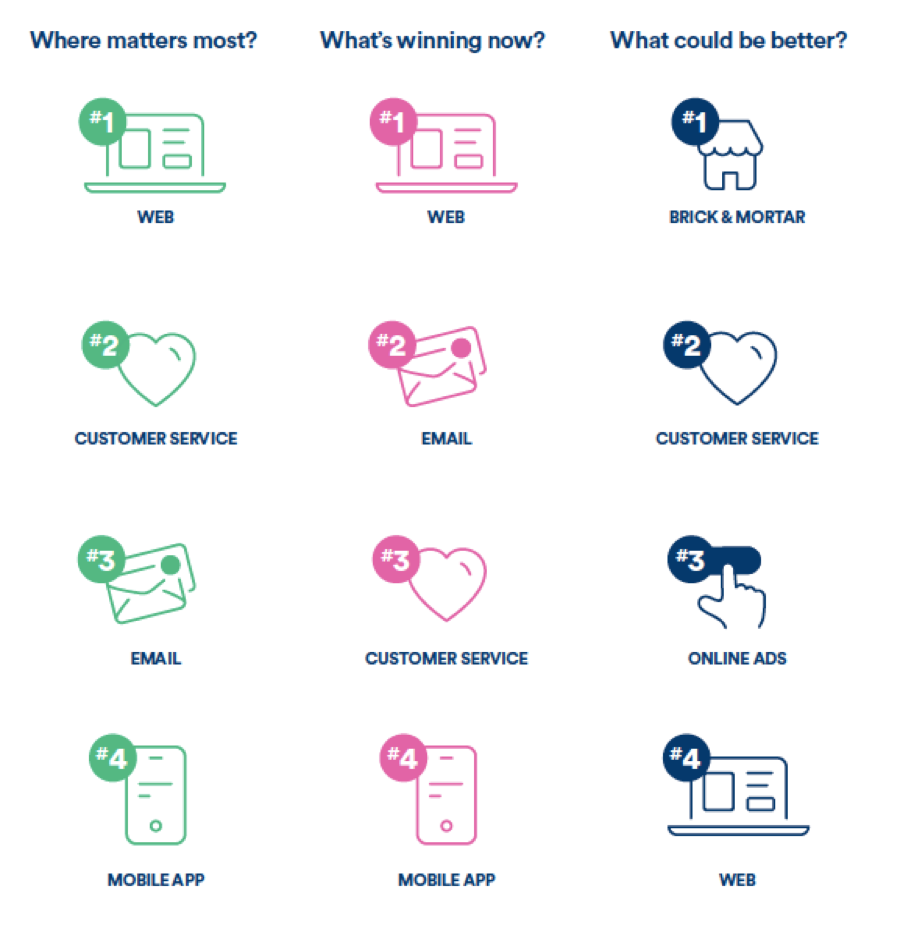
What does it take to do personalized marketing?
Given the obvious benefits of personalized marketing you would think every brand would be in rapid pursuit of making it happen. But that’s simply not the case.
Most assume personalization is the domain of the megabrands such as Amazon and Netflix and consider it too resource-intensive and therefore out of reach.
What are the main things brands struggle with?
The answers include:
- Technology
- Strategy
- Budgets
- Staff skills
Technical challenges loom largest and include:
- Integrating data sources
- Automating decisions at scale
- Gaining a real-time view of customers with context
- Understanding buying behavior
- And more
How do you overcome the technical hurdles?
As you would expect, software is the key. The challenge is to achieve new levels of insight from multiple customer touchpoints and respond. A tightly integrated martech stack must inform decisions and:
- Enhance collaboration between the marketing and all departments integral to the customer experience to ensure fast and satisfying fulfillment.
- Mine huge data volumes to create effective campaign strategies.
For many brands, offline systems must factor in as well. Consider, for example, the important data generated at the point of sale.
Essentially, every action at every touchpoint in the connected customer journey is a source of data. Three questions become crucial:
- Is the data collected?
- Is the data integrated?
- Does the data inform action across the marketing, service, and customer experience your brand delivers?
The continued maturation of AI and machine learning are helping addresses the challenge with technology. Platforms including CRM and marketing automation enter the equation as well. However, marketing automation platforms usually automate engagement for a single channel.
A new breed of software, the customer data platform (CDP) is emerging as the connective tissue that delivers the ability for marketers to tap into a system that reveals needs-based data regarding the individual buyer.
What is a CDP?
A CDP is not a CRM or a marketing automation platform (MAP). It provides marketers a central location for customer data. A CDP opens the door for marketers to employ personalized marketing using omnichannel data in real-time to tailor digital experiences to the customer.
According to Gartner, CDPs are gaining widespread attention from marketers because they provide “a holistic view of the customer to help execute and optimize personalized journeys.”
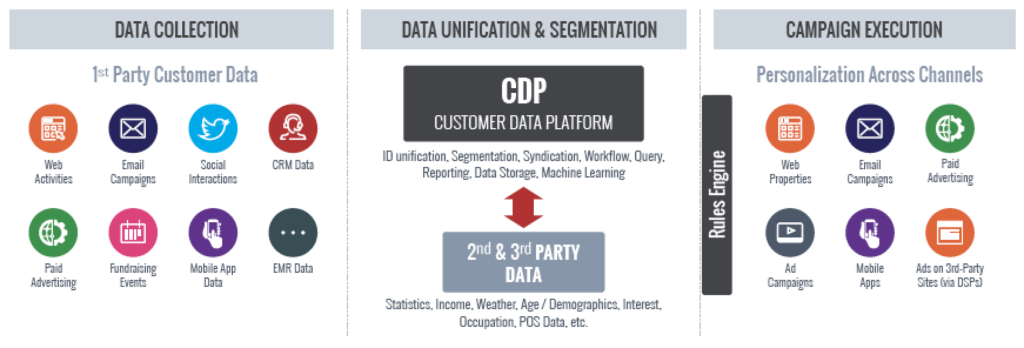
Element Solutions simplifies the essential
role of the CDP
What is customer journey analytics?
The customer journey tends to be cross-functional in nature. McKinsey found:
- 56% of all customer interactions occur during a multi-event, multi-channel journey
- 38% of all customer journeys involve more than one channel of interaction
As we’ve established, personalized marketing demands an actionable single customer view. The essential ideas:
- The goal is to identify points where you can influence and enhance the journey, journey analytics are indispensable.
- Customer journey analytics allow you understand what customers are thinking, feeling, and doing across touchpoints.
- An effective journey analytics tool aggregates and presents actionable data you use to engage with customers via the right channel when it matters most.
Customer journey analytics overcomes the gaps between analytics and action.
Forrester claims customer journey analytics combines quantitative and qualitative data to analyze customer behaviors and motivations across touchpoints and over time to optimize customer interactions and predict future behavior.
How do you get customer journey analytics?
The simple answer is you get customer journey analytics from an AI-powered CDP.
One provider claims: AI-powered CDP gives organizations access to thousands of metrics for each customer from the earliest prospect stage of the journey through long-term, loyal customers. It also builds individual customer profiles in real-time to take the guesswork out of customer journey analytics.
What does personalized marketing look like?
Here are snapshots of six brands putting personalized marketing to work.
STARBUCKS
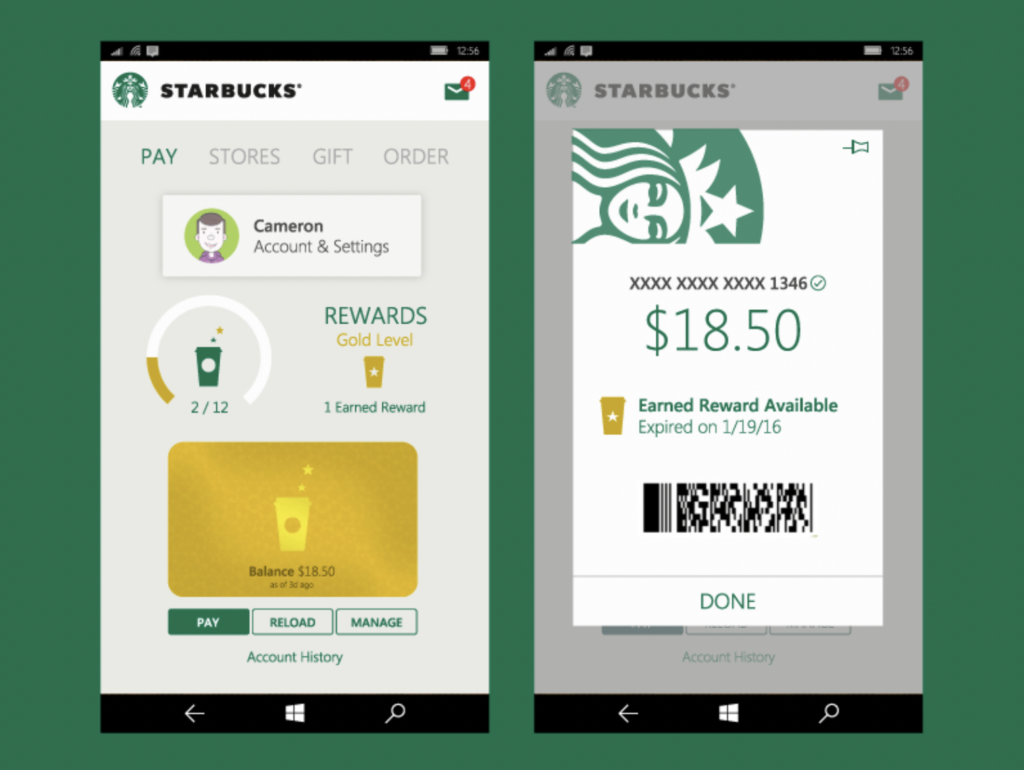
Starbucks engages its customers with its mobile app My Starbucks Rewards Program, which makes use purchase history, location, and more. According to GlobalWebIndex, the introduction of the rewards system saw Starbucks’ revenue soaring to $2.56 billion, while the app has generated around 6 million sales per month (around 22% of all U.S. sales).
SPOTIFY
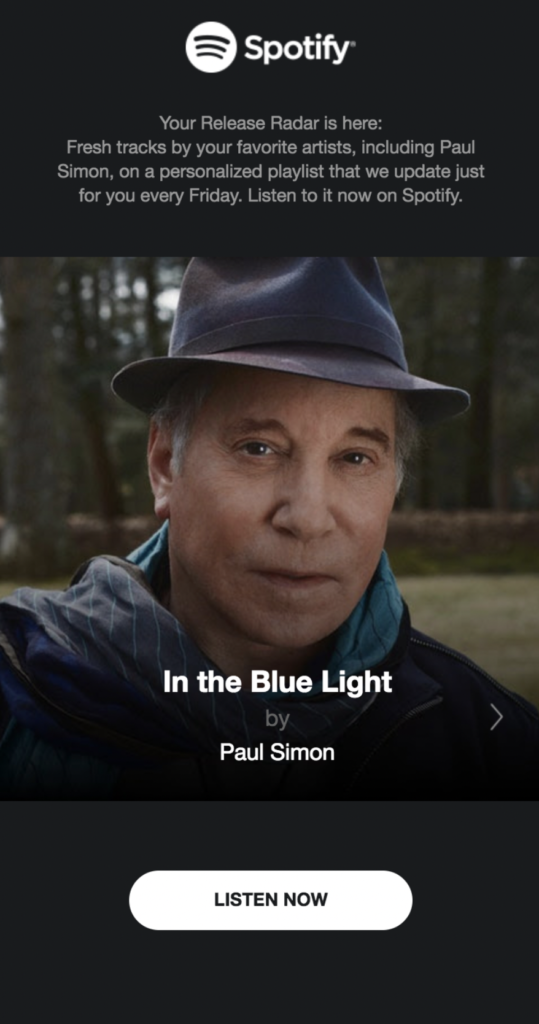
Spotify has mastered the fine art of content recommendations. I’m sent personalized playlists based on my listening history and concert notices about bands “Because I listen to them.”
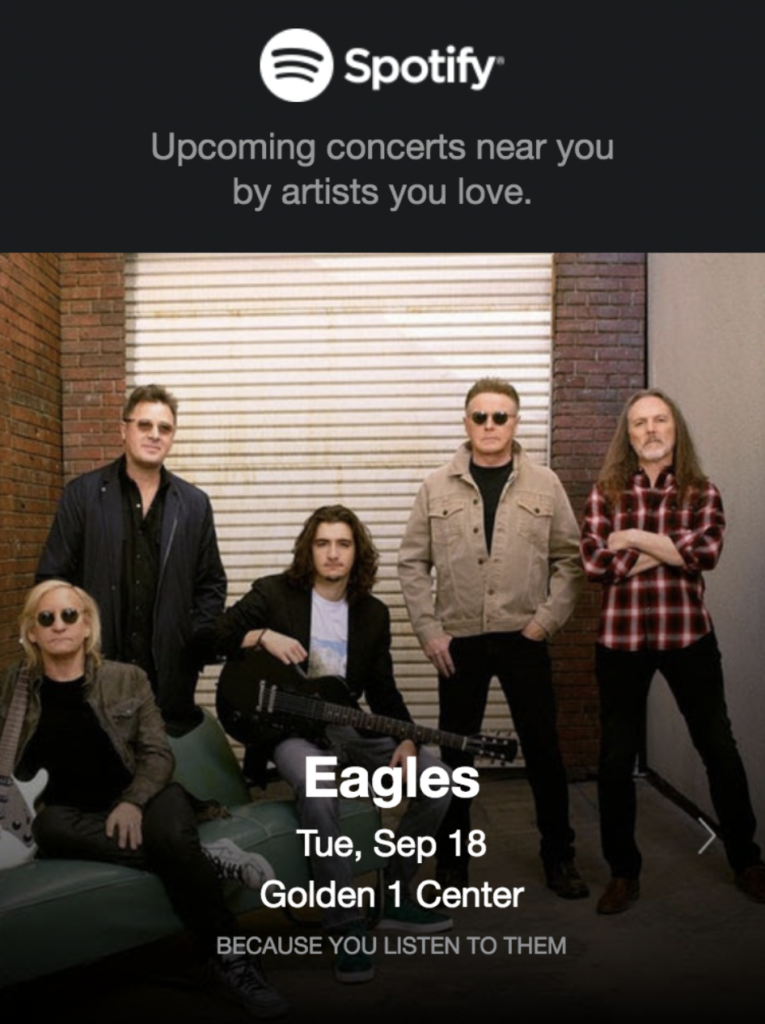
NETFLIX
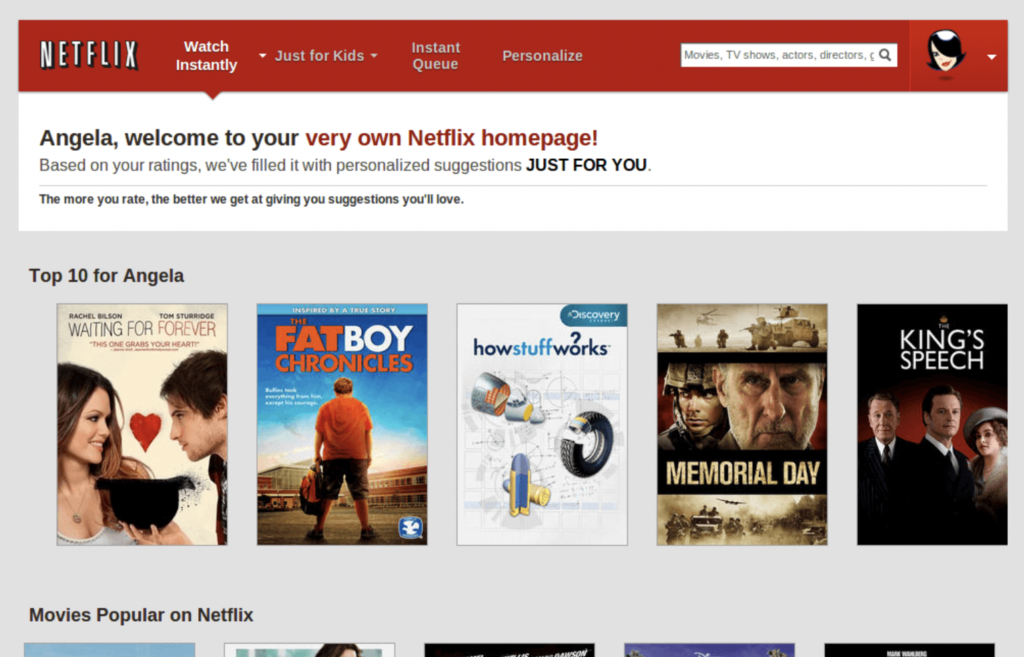
Netflix combines behavioral attributes with predictive learning to present subscribers content recommendations. More than 75 percent of its website activity is driven by their personalization engine.
NAKED WINES
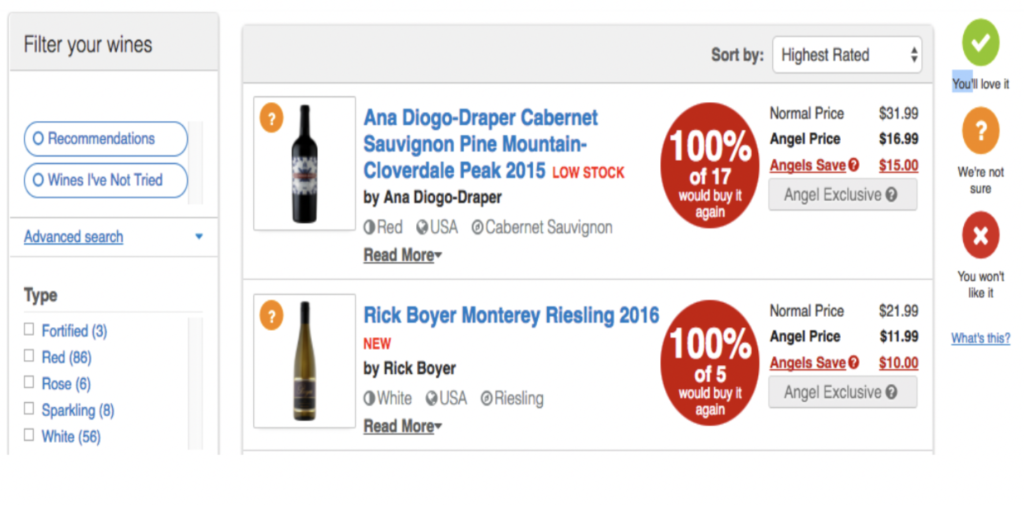
Naked Wines has adopted personalized marketing strategies similar to Amazon.
The online
seller allows you to buy wines and rate them and delivers personalized
recommendations based on your tastes.
EASYJET
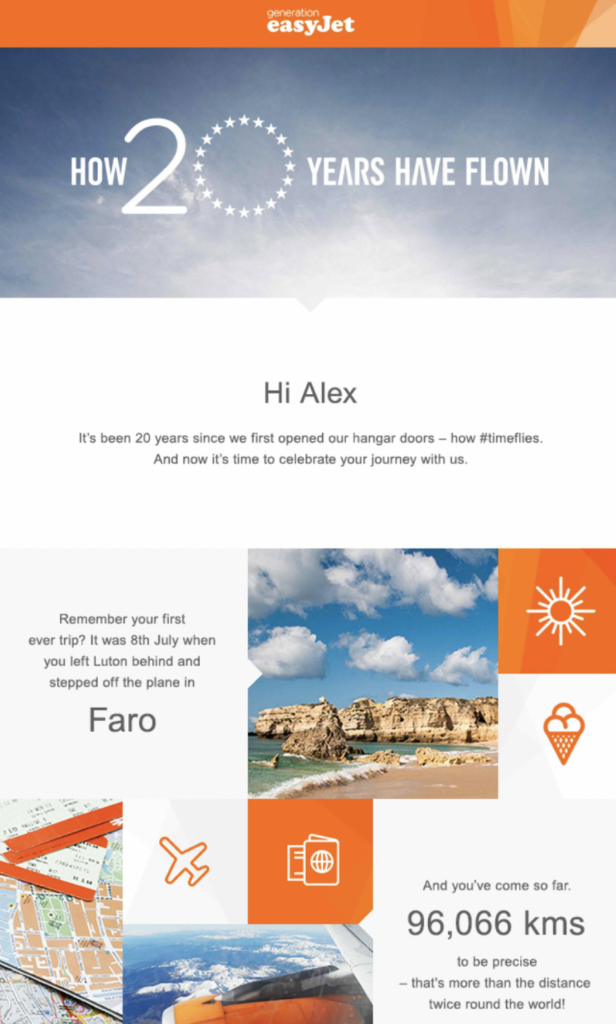
easyJet celebrated its 20th anniversary with emails that made personal travel recommendations. The company created a model that profiled all the destinations the customer had been to and suggested other, relevant ones.
Open rates were over 100% more than its average
newsletter—with 25% higher click-through rates. 7.5% of
easyJet customers who received the personalized email went on to make a
booking within the next 30 days.
EVERGAGE

Rather than generically promote content across its site,
Evergage uses one-to-one content recommendations to
show website visitors specific content assets based on who the visitor is, what
they’ve shown affinities for, and what they’ve already downloaded.
Are you ready to personalize your marketing?
Dynamic Yield’s 2019 Personalization Maturity Assessment indicates 97% of marketers believe personalization is valuable yet the majority still can’t say they’re prioritizing it as a strategic initiative.
Additional data from the study claims only 5% have attained a single view of the customer to orchestrate personalization across channels.
Where are you now?
Like most things that promise large rewards, achieving effective personalized marketing requires taking methodical and persistent steps up a steep path. Try to gauge where you stand today.

This diagram from WebEngage depicts a maturity model that might help you determine where you are and understand subsequent steps.
Will you need help?
Getting going with personalized marketing isn’t strictly the domain of software.
“Building a personalization program starts with getting the relevant stakeholders in your organization on the same page about the value and benefits of the initiative, developing a comprehensive strategy, ensuring you have the right skills on the team, defining a process to execute a personalization program, and confirming you have the appropriate level of governance in place to keep your personalization efforts on track.”
(Excerpt from One-to-One Personalization In the Age of Machine Learning, by Karl Wirth and Katie Sweet, Evergage, Inc. 2017)
You may want to tap a digital
marketing agency that knows the ropes and is capable of helping you accurately
assess your systems, processes, and capabilities to determine next steps.
I’ve done a lot of reading on the topic and found that common theme is to “start small.”
You may not be able to leap from the basic (and boring) personalized email subject line to the immensely personalized experience a brand like Spotify delivers, but in short measure—with the guidance of professionals—you should take smart, strategic steps leading you up and to the right in your pursuit of personalized marketing.
Keep in mind, your customers expect a personalized experience. Will they get it from your brand or from a competitor?

